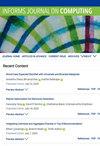经济资本的蒙特卡洛方法
IF 2.3
4区 计算机科学
Q3 COMPUTER SCIENCE, INTERDISCIPLINARY APPLICATIONS
引用次数: 0
摘要
经济资本(EC)是金融公司使用的一种风险度量,用于指定资本水平,以保护(高概率)免受重大不可预见的损失。EC定义为损耗分布的(极端)分位数与平均值之间的差值,通常通过蒙特卡罗方法估计。虽然简单随机抽样(SRS)在估计平均值方面可能是有效的,但它对于EC中的极端分位数可能是低效的。应用重要性抽样(IS)可能导致一个有效的分位数估计,但对平均值可能做得很差。测量特定的IS (MSIS)使用IS来估计分位数,而均值则通过SRS独立处理。我们分析了仅使用SRS、仅使用IS、MSIS、使用防御混合的IS以及使用SRS和IS同时估计分位数和平均值的双估计器获得的EC估计量的大样本性质,建立了EC估计量的bahadur型表示并证明了它们服从中心极限定理。当损失是大量独立同分布随机变量的和时,我们给出了比较估计量的渐近理论。数值和仿真结果,包括一个具有依赖债务人的大投资组合信用风险模型,补充了理论。历史:布鲁诺·塔芬接受,区域编辑模拟。基金资助:本研究由美国国家科学基金资助[Grant CMMI-1537322]。补充材料:支持本研究结果的软件可在论文及其补充信息(https://pubsonline.informs.org/doi/suppl/10.1287/ijoc.2021.0261)以及IJOC GitHub软件存储库(https://github.com/INFORMSJoC/2021.0261)中获得。完整的IJOC软件和数据存储库可从https://informsjoc.github.io/获得。本文章由计算机程序翻译,如有差异,请以英文原文为准。
Monte Carlo Methods for Economic Capital
Economic capital (EC) is a risk measure used by financial firms to specify capital levels to protect (with high probability) against large unforeseen losses. Defined as the difference between an (extreme) quantile and the mean of the loss distribution, the EC is often estimated via Monte Carlo methods. Although simple random sampling (SRS) may be effective in estimating the mean, it can be inefficient for the extreme quantile in the EC. Applying importance sampling (IS) may lead to an efficient quantile estimator but can do poorly for the mean. Measure-specific IS (MSIS) instead uses IS to estimate only the quantile, and the mean is independently handled via SRS. We analyze large-sample properties of EC estimators obtained via SRS only, IS only, MSIS, IS using a defensive mixture, and a double estimator using both SRS and IS to estimate both the quantile and the mean, establishing Bahadur-type representations for the EC estimators and proving they obey central limit theorems. We provide asymptotic theory comparing the estimators when the loss is the sum of a large number of independent and identically distributed random variables. Numerical and simulation results, including for a large portfolio credit risk model with dependent obligors, complement the theory. History: Accepted by Bruno Tuffin, Area Editor for Simulation. Funding: This work was supported by the National Science Foundation [Grant CMMI-1537322]. Supplemental Material: The software that supports the findings of this study is available within the paper and its Supplemental Information ( https://pubsonline.informs.org/doi/suppl/10.1287/ijoc.2021.0261 ) as well as from the IJOC GitHub software repository ( https://github.com/INFORMSJoC/2021.0261 ). The complete IJOC Software and Data Repository is available at https://informsjoc.github.io/ .
求助全文
通过发布文献求助,成功后即可免费获取论文全文。
去求助
来源期刊

Informs Journal on Computing
工程技术-计算机:跨学科应用
CiteScore
4.20
自引率
14.30%
发文量
162
审稿时长
7.5 months
期刊介绍:
The INFORMS Journal on Computing (JOC) is a quarterly that publishes papers in the intersection of operations research (OR) and computer science (CS). Most papers contain original research, but we also welcome special papers in a variety of forms, including Feature Articles on timely topics, Expository Reviews making a comprehensive survey and evaluation of a subject area, and State-of-the-Art Reviews that collect and integrate recent streams of research.
 求助内容:
求助内容: 应助结果提醒方式:
应助结果提醒方式:


